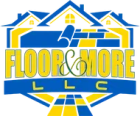Floor & More
Introduction
- Overview of Colorado’s diverse climate.
- The importance of understanding the climate for residents and travelers.
- Introduction to the concept of microclimates and how they influence various areas of Colorado.
Section 1: The Geographic Influence on Colorado’s Climate
- Subsection 1.1: Colorado’s Geography and Climate Zones
- Elevation: The state’s high altitude and the impact on weather.
- Mountain ranges (Rocky Mountains) and their influence on local climate.
- The western slope, eastern plains, and foothills: how the terrain contributes to distinct weather patterns.
- Subsection 1.2: The Continental Divide and Weather Patterns
- Explanation of how the Continental Divide affects weather, moisture flow, and temperature.
- The role of prevailing westerly winds and how they interact with the terrain
Section 2: Temperature Variations Across Colorado
- Subsection 2.1: The Impact of Elevation
- How altitude influences temperature and the diurnal temperature variation (difference between day and night temperatures).
- Effects of altitude on seasonal temperature variation across different regions.
- Subsection 2.2: Seasonal Temperature Shifts
- Spring: Transition from winter to summer, increasing temperatures.
- Summer: The impact of summer heat at lower elevations and cooler temperatures at higher altitudes.
- Fall: Cooler temperatures, early frosts, and mountain snow.
- Winter: Cold temperatures in the plains, heavy snowfall in the mountains.
Section 3: Precipitation Patterns in Colorado
- Subsection 3.1: Understanding Rainfall and Snowfall
- Average rainfall and snowfall data for various regions (Plains, Foothills, and Mountainous areas).
- The phenomenon of rain shadow: Areas receiving more precipitation and those receiving less due to mountain barriers.
- Subsection 3.2: Snowfall and Winter Weather
- Heavy snowfalls in the mountains vs. lighter snowfalls in the plains.
- The unique characteristics of Colorado’s snowstorms.
- Avalanche zones and their impact on the mountains during winter months.
- Subsection 3.3: Thunderstorms and Severe Weather
- Frequency of thunderstorms, especially in summer months.
- The risk of hailstorms, tornadoes, and flash floods.
- Why Colorado is known for its high number of tornadoes, even though it’s not a “Tornado Alley” state.
Section 4: Microclimates in Colorado
- Subsection 4.1: What Are Microclimates?
- Explanation of microclimates and how they form.
- How local factors like topography, land cover, and urban heat islands create unique climates within a larger region.
- Subsection 4.2: Examples of Microclimates in Colorado
- The contrast between cities like Denver (urban heat island effect) and the cooler, higher-altitude mountain towns.
- Colorado’s deserts (such as the Grand Junction area) vs. the wetter, more temperate mountain regions.
- Subsection 4.3: The Influence of Urban Development
- How large cities like Denver affect local climate through the urban heat island effect.
- The difference in weather and temperature in mountain towns and cities in the plains.
Section 5: Climate Impacts on Agriculture and Ecosystems in Colorado
- Subsection 5.1: Farming and Agricultural Zones
- How Colorado’s climate affects crop choices (e.g., corn, wheat, and barley in the plains; more diverse crops in areas like the Western Slope).
- Water limitations and drought management in agriculture.
- How farmers adjust to late-season frosts and early freezes.
- Subsection 5.2: Vegetation and Ecosystem Types
- From alpine ecosystems to dry, arid areas: How different vegetation zones correlate with climate.
- Examples of wildlife and plant species found in various regions based on climate conditions (forest, grassland, and alpine).
Section 6: Climate Change and its Effects on Colorado
- Subsection 6.1: How Global Warming Is Affecting Colorado
- The rise in average temperatures in recent decades.
- The effects on snowmelt timing, river flow, and drought conditions.
- Subsection 6.2: Changes in Precipitation and Snowpack
- Shifting precipitation patterns and their impact on water resources.
- The declining snowpack in the Rockies and implications for water storage and supply in Colorado.
- Subsection 6.3: Wildfires and Drought
- Rising temperatures and their link to increased frequency and intensity of wildfires in the state.
- The role of drier conditions in increasing the threat of wildfires in Colorado.
Section 7: How to Prepare for Colorado’s Climate
- Subsection 7.1: Weather-Appropriate Home Improvements
- Insulation, energy efficiency, and home preparedness for extreme temperatures and weather events.
- Subsection 7.2: Best Landscaping Practices for Colorado’s Climate
- Xeriscaping, drought-resistant plants, and sustainable landscaping techniques for Colorado homeowners.
- Subsection 7.3: Personal and Family Preparedness
- Understanding weather patterns, how to prepare for storms, and making emergency plans.
Conclusion
- Summary of Colorado’s unique climate features.
- How understanding local climate patterns is crucial for residents, homeowners, and visitors.
- The importance of adapting to climate changes for sustainability and resilience and choosing the right flooring in Centennial CO.
